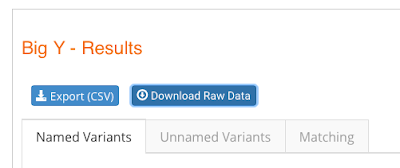At a recent webinar, organised by the Farrell Clan Association, I gave an update on the Farrell DNA Project and you can see the video here.
Links associated with the presentation are included below.
The project currently has 665 members and you can see the Results Page here. There are 21 groups currently in the project and the presentation focuses on the largest three groups:
- Group 5 has 15 members. The dominant surnames are Farley & Farrelly and they appear to have origins in Cavan / Meath. Woulfe's surname dictionary gives a brief description of a "distinguished ecclesiastical family" from Drumlane, county Cavan, who may have been ancestors of this group. They were "coarbs of St Mogue" and "erenaghs of Drumlane". Coarbs and erenaghs were like lay abbots and helped with the running of the monastery - see here (p23). Genetically, the common ancestor for the current members of the group was born about 1050 AD, which is within the time period of the emergence of surnames in Ireland (roughly 900-1200 AD).
- Group 4 has 16 members, divided into two main branches. In one branch the Farrell name predominates and dates back to the 1580s. Sam Hanna has done extensive research on this branch and has written a book about his research. This branch is probably descended from Scottish settlers who arrived in the early 1600s as part of the Plantation of Ulster. The second branch is dominated by the surname Farris (and variants), and this group shares a common ancestor who lived about 1400 AD, probably in Scotland. The overarching ancestor for both branches probably lived some time in the 1300s in Scotland. As more Scottish men called Farris do the Big Y test, this date could be pushed back further.
- Group 2 has 68 members and represents the Farrell's of Annaly (Longford). Genetically, their common ancestor was born about 950 AD, which is within the timeframe when surnames were introduced in Ireland. Woulfe describes how the clan split into the O'Farrell Bawn (in North Annaly, which roughly corresponds with the barony of Granard in northeast county Longford), and the O'Farrell Bwee (in South Annaly, a much larger territory which roughly corresponds with the remaining more southerly portion of county Longford, extending slightly into the neighbouring counties of Westmeath and Roscommon). In addition, O Hart describes an additional 8 branches of the wider Farrell Clan - it would be great to have representatives from each of these branches in the project, so if you know of any, get them on board! Most of these branches link up with the ancient medieval genealogies, which in turn go far back into the distant past, so having Y-DNA from their descendants would be an essential part of the project moving forwards.
 |
| The 10 documented branches of the O'Farrell's of Annaly - which branch do you belong to? |
This 2024 update emphasised the Triangular Interplay between Surnames, Geography & DNA. And in order to figure out which genetic branch is which, people are encouraged to include their ancetor's townland of origin (if known) and whether they are O'Farrell Bwee or O'Farrell Bawn.
We also explored the link between the Farrell's of Group 2 and the medieval genealogies of the Conmaicne Mara (from whom they are supposed to originate). By constructing a CAST (Clan-Associated Surnames Tree) from the genealogies, and a DAST (DNA-Associated Surnames Tree) from the DNA, we were able to see where the two trees (one genealogical, the other genetic) were consistent with each other, and where they were not. Strong genetic connections to the Reynolds & Shanley surname, as well as (currently) less substantial connections to the surnames Mulvey, Brogan, Christie & McGarrell, provided convincing evidence that this portion of the Irish medieval genealogies appears to be broadly accurate.
 |
| CAST vs DAST comparison - Conmaicne Mara (click to enlarge) |
Next Steps & further testing
- If you don't see your name on our Results Page or the Time Tree, you need to adjust your settings in order to allow display of your anonymized results. Instructions here (item 7).
- If you haven’t done so already, post your pedigree on our Pedigrees Page (or send it to me and I will do it for you - mauricegleeson AT doctors.org.uk).
- If you don't see your EKA (Earliest Known Ancestor) on the Results Page, you need to adjust your settings to include him in your profile. And remember to include his townland (if you know it). Instructions here (item 3).
Happy Thanksgiving!





















